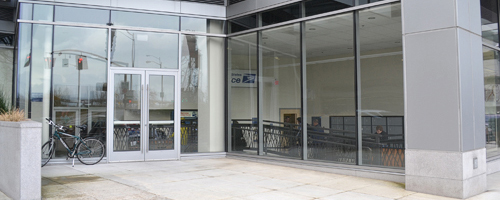Inexact science: Recruiting hits, misses
Listen for the purr of fax machines all over the country Wednesday morning as they shoot out letters.
It is the unmistakable sound of Signing Day, one of the most anticipated events on the college football calendar if only because every school actually plays.
But it might as well be called Guessing Day, and that sound just as easily could be coaches everywhere praying that their hunches were right and their jobs are safe.
Most major programs do all of the basics in recruiting. They watch a lot of tape, try to see recruits play in person, make in-home visits to get better reads on the player and his family, and stay in constant contact with phone calls and letters. And yet sometimes a player’s talent is overrated – or underrated.
“It is an educated guess, but it really is a guess,” Greg Biggins said, a recruiting expert for Student Sports magazine. “And every college is going to make mistakes.”
Sure, fans of schools such as Florida, Louisiana State, Oklahoma and USC, which are battling for the top spot in the national recruiting rankings, should be ecstatic about the prized classes their teams are expected to sign today to national letters of intent.
Success today, however, guarantees nothing down the road, no victories and certainly no national championships.
“It’s good to get great players, but you’ve got to do something once you get them there,” said Jeremy Crabtree, the lead recruiting analyst for Rivals.com.
And often that great player, the one every school in the country wants, is nowhere near as good as the one few notice.
Wide receiver Stanley Guyness was “the man” at Los Alamitos in the mid-`90s and the player coaches and recruiting experts assumed would play on NFL Sundays, not just college football Saturdays. Tony Hartley was his overlooked teammate, even though he had excellent numbers.
Guyness, however, was plagued by injuries and a lack of production at USC and played in only two games for the Trojans. Hartley was grabbed by Oregon, where he had 160 receptions, 2,744 receiving yards and 21 touchdown catches as one of the top receivers in the Pac-10.
“Oregon is a school that rarely is ranked higher than fourth in the conference in recruiting but always does well with the talent it gets,” Rivals’ West Coast analyst Rick Kimbrel said.
“Everyone got that one wrong. I thought Stanley Guyness was going to be all-world, but he just didn’t have it. But every college in America picked Stanley over Tony. Biggins said.”
USC scored big last year with a recruit who didn’t even register on Rivals’ list of its top 100 prospects and was the service’s No. 23 wide receiver in the nation.
“Mike Williams is a prime example of a guy who nobody thought would do what he did,” Trojans coach Pete Carroll said.
Actually, the big three schools near Williams’ home, Florida, Florida State and Miami wanted him to either red-shirt last season or switch to defense, but he signed with USC and shattered Pac-10 and national receiving records.
Carroll picked up his share of commitments from top- ranked recruits this year, but he said his staff focused more on what players could do for the Trojans than the national attention they received.
“We thought long and hard to try to create a system of evaluation that brings us to that point where we just don’t take the guys that are on the All-America lists or whatever,” Carroll said. “We don’t want to do that. We use those things to let us know who’s out there and who’s attractive, but then we look at it on a case-by-case basis and figure out who’s right for us. But it’s not an exact science.”
UCLA made regular appearances on recruiting services’ top-10 lists for the wealth of talent the Bruins signed each year. But new UCLA coach Karl Dorrell tried to change the Bruins’ approach to finding talent this year. Big names are fine but not necessary.
“We’re going to recruit guys we think are high profile and who can help our program,” Dorrell said. “That might be a guy with a lot of accolades on everyone’s list, or it might be a guy nobody knows. We’ll try to have a mixture of highly recruited players and surprise players.”
After all, a player who is perfect for UCLA might not fit at USC, if only because of different needs and styles of play.
“One guy’s gem is going to be another guy’s bum,” Rivals’ Crabtree said. “One coach is going to get another guy on campus and think he’s a steal because of what he gets from him. That same guy might never have made it somewhere else.”
Obviously, luck is a factor in recruiting success, especially when it comes to avoiding injuries. But thorough evaluation that goes well beyond what recruiting magazines and Web sites is every bit as essential.
“Our approach is that the evaluation never stops,” Carroll said. “We know we might be wrong occasionally, but we don’t think it will happen often. We know we’re going to be successful if we can eliminate as much of the guessing as possible.”



